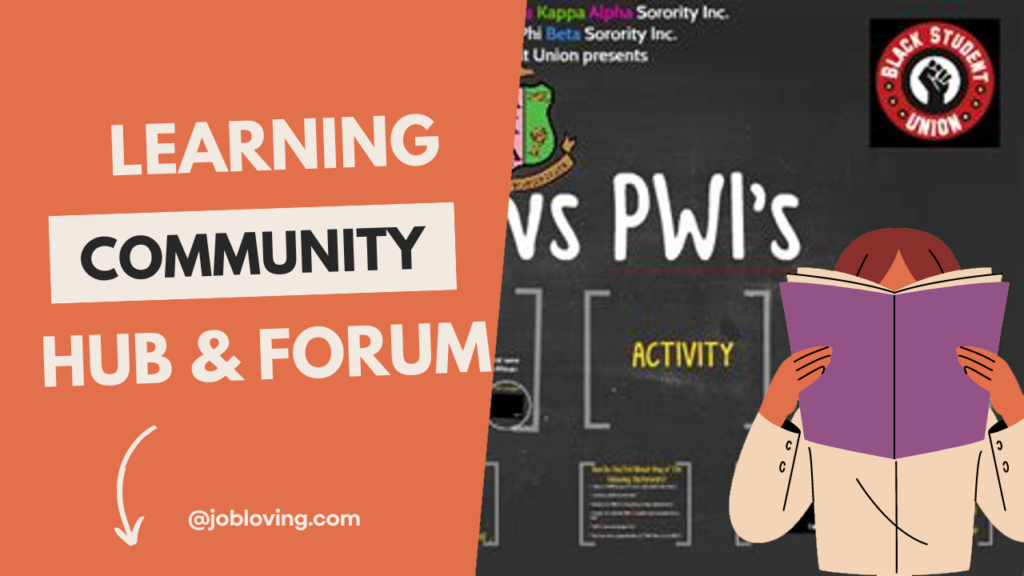Have you ever found yourself scratching your head over the differences between Predominantly White Institutions (PWIs) and Historically Black Colleges and Universities (HBCUs)? You’re not alone! These two types of institutions play significant roles in the American education landscape, each with its own unique history, culture, and approach to diversity. So, buckle up as we dive into the world of higher education!
Answer: PWIs and HBCUs serve different purposes and communities.
Understanding the differences between PWIs and HBCUs boils down to their foundational principles and cultural significance. PWIs are mainly institutions where the majority of the students are white, aiming to provide a diverse environment that encompasses various races and cultures. In contrast, HBCUs were established primarily to provide educational opportunities for Black Americans during a time when access was heavily restricted. They focus on fostering a culturally rich environment that celebrates Black history and community.
Now, here’s where it gets spicy: while PWIs often have higher diversity numbers today, they don’t always tackle the historical context or the specific needs of Black students as HBCUs do. HBCUs emphasize not only academic excellence but also cultural affirmation, community support, and social justice advocacy. Think of HBCUs like a family gathering where everyone understands the shared history and culture, whereas PWIs might resemble a massive party where the theme of inclusion can sometimes get confused in the crowd. This distinction can shape everything from campus life to educational experiences, offering students different varieties of community and belonging.
In conclusion, PWIs and HBCUs are both important but cater to different experiences in higher education. Whether you’re looking for a broader cultural mix or a community steeped in Black heritage, both have their unique offerings that contribute beautifully to the rich tapestry of American education. So, if you’re curious and want to know more about higher education choices or if you have questions, don’t hesitate to join the JobLoving community for more resources! Your educational journey is just beginning! 🌟
Key takeaways about PWI vs HBCU
Community and Cultural Support
- HBCUs provide a strong sense of community, fostering unity among Black students through shared experiences.
- Black students often feel more accepted and understood in the community atmosphere of HBCUs.
- Black Greek organizations, like the Divine Nine, play a significant cultural role at HBCUs.
- Events celebrating Black culture are more prevalent at HBCUs, enriching the student experience and community.
- Cultural events at HBCUs create a sense of belonging, contrasting with limited options at PWIs.
- Upperclassmen mentorship at HBCUs fosters a supportive environment for younger students navigating college life.
- The camaraderie at HBCUs allows students to be themselves without the pressure of representation.
- Black students at PWIs often find it necessary to form their own cultural groups for support.
- PWIs may promote diversity but often lack authentic cultural celebrations compared to HBCUs.
- The Black majorette team at SIU exemplifies efforts to celebrate Black culture within a PWI.
Academic Environment and Support Structures
- HBCUs typically have more Black faculty, enhancing understanding and support for Black students’ experiences.
- The presence of Black faculty at HBCUs fosters a nurturing environment for academic success.
- Black students at PWIs frequently feel pressure to prove themselves academically in predominantly white environments.
- Funding inequalities show HBCUs’ endowments lagging 70% behind those of predominantly white institutions (PWIs).
- HBCUs offer scholarships and internships specifically targeted for Black students, enhancing educational opportunities.
- The Black Resource Center at PWIs aims to address unique needs of Black students on campus.
- Self-advocacy workshops at resource centers empower Black students to express their needs and concerns.
Challenges Faced by Black Students
- PWIs often lack resources tailored to Black students, leading to feelings of isolation and discomfort.
- Experiences of racial discrimination at PWIs can significantly impact Black students’ mental health and well-being.
- PWIs may unintentionally perpetuate stereotypes about Black students being underprivileged, impacting their campus experience.
- Black students often have easier access to culturally relevant resources and support at HBCUs.
Differing Institutional Goals and Considerations
- HBCUs are specifically designed to cater to the educational needs of Black students, providing a unique cultural context.
- PWIs strive for diversity but often fail to create an inclusive environment for Black students.
- While PWIs may have broader institutional support, they often lack the tailored programs that HBCUs provide.

